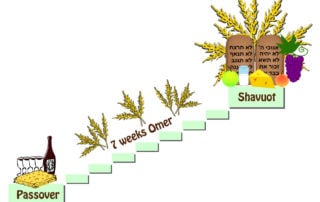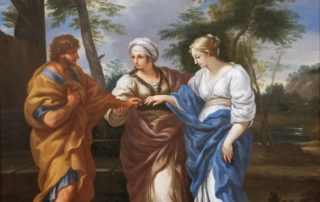Counting Weeks and Days
There is a Biblical Commandment to count the days between the Passover and Shavuot, the "Feast of Weeks" (a.k.a. Pentecost). We start counting on the second day of Passover (the first day of the barley harvest in the land of Israel, when the wave-offering of the omer, i.e., “sheaf,” of ripe barley was made in the Jerusalem Temple) and finish on the eve of Shavuot—the day when two loaves of bread made of wheat were offered at the Temple. There are exactly seven weeks (forty-nine days) between these two holidays; we are commanded to count the weeks and the days. These forty-nine days are called days of Sefirat HaOmer (the days of “counting the Omer”) or, simply, days of Sefirah ("counting"). This commandment is given in the following verses of the Torah: And [...]


